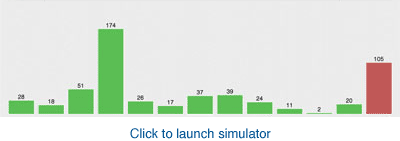
Bay Citizen election simulator demystifies new way of voting in San Francisco
Bay Citizen election simulator
The Bay Citizen, a nonprofit and nonpartisan news outlet, is covering the San Francisco mayor’s race with a ground-breaking interactive tool that manages to explain in simple terms the complicated ranked-choice voting system used by the city to choose the mayor and other public officials. Under ranked-choice voting, voters select their top three candidates in order of preference. The lowest vote-getters are knocked out and their votes are redistributed until one candidate wins a majority.
The Bay Citizen, in partnership with The Leo T. McCarthy Center for Public Service and the Common Good at the University of San Francisco, surveyed registered voters in October, and plugged the results into a ranked-choice voting simulator created by news applications developer Shane Shifflett and lead software engineer Aurelio Tinio. The results clearly illustrated how ranked-choice voting works and accurately predicted the winner: former city administrator Ed Lee. As the results rolled in from the Nov. 8 election, The Bay Citizen was not only able to publish the totals but also show how the system made Lee the winner.
The online simulator works like this: If no candidate has a majority, the simulator eliminates the candidate with the fewest votes and redistributes the second choices of voters who selected that candidate as their first choice. Round by round, the simulator eliminates candidate and redistribute their votes, until one candidate has a majority.
Nancy Shalhub, a senior at University of Miami studying Political Science and Mass Communications, wrote this post for KnightBlog.
Recent Content
-
Journalismarticle ·
-
Journalismarticle ·
-
Journalismarticle ·


